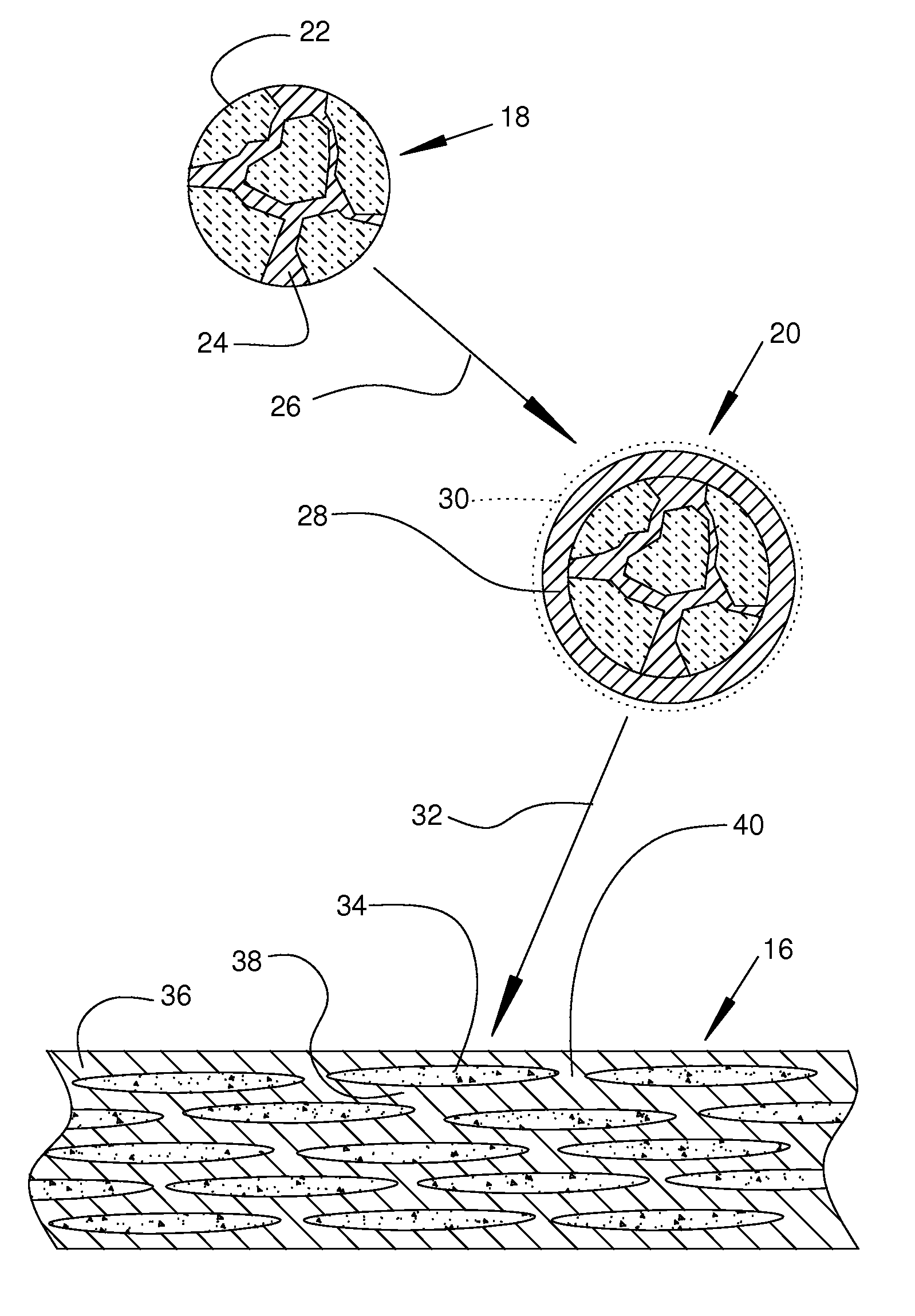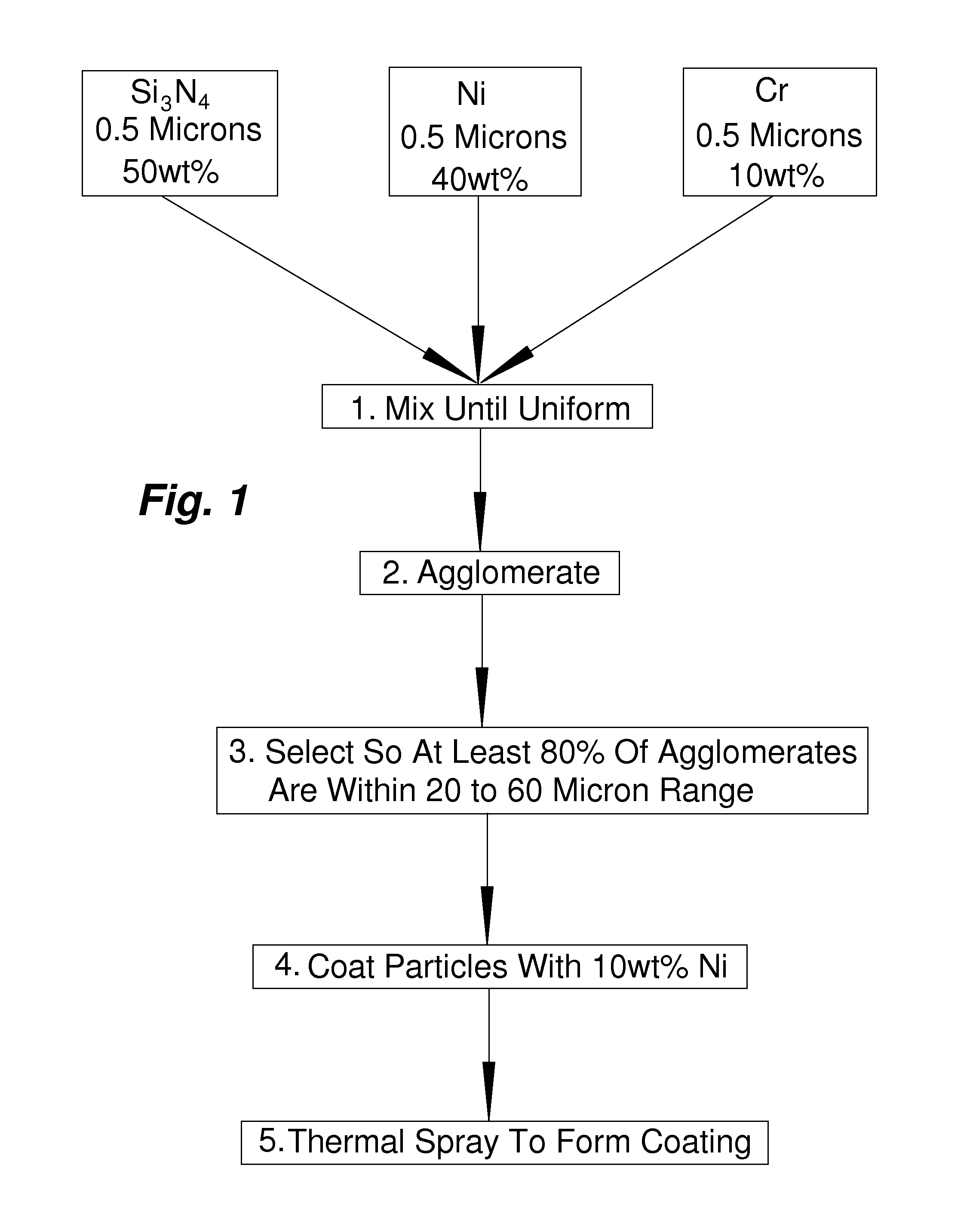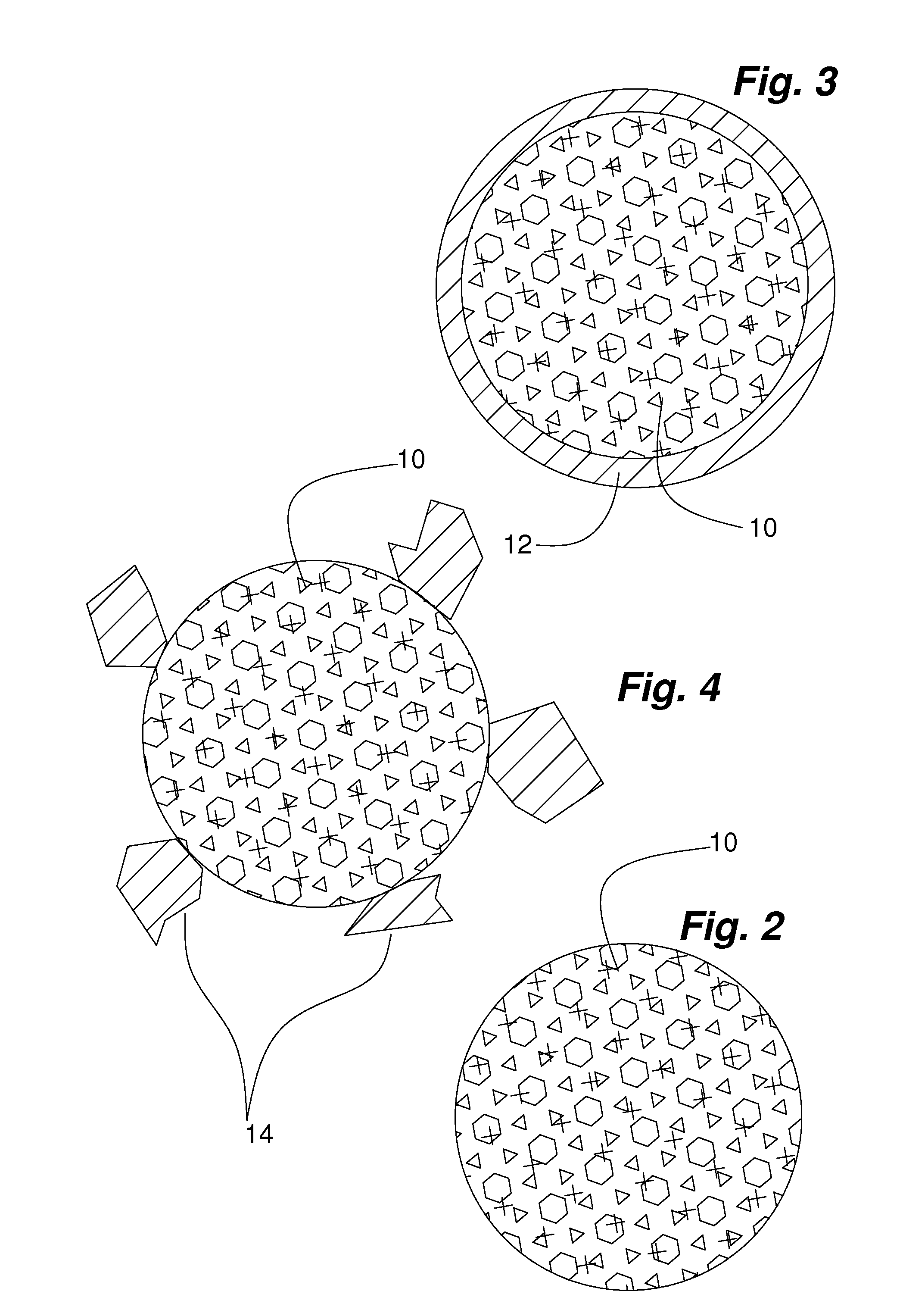Coatings, composition and method related to non-spalling low density hardface coatings
a low-density hard-face coating, non-splashing technology, applied in the direction of coatings, vacuum evaporation coatings, transportation and packaging, etc., can solve the problems of thermally sprayed tungsten carbide-cobalt coatings, for example, are very hard, brittle and dense, and ceramics generally decompose instead of melting
- Summary
- Abstract
- Description
- Claims
- Application Information
AI Technical Summary
Benefits of technology
Problems solved by technology
Method used
Image
Examples
example 1
[0039]The first of two agglomerated microcomposite powders were prepared by ball milling about 0.5 micron Si3N4 powders with about 28 volume percent (V %) Ni and about 7V % Cr powder for about 24 hours in a ball mill. This Example is diagrammatically illustrated in FIG. 1. The second powder consisted of about 0.5 micron TiN powder with about 28 V % Ni and about 7 V % Cr, and it was prepared in the same way as the Si3N4—Ni—Cr powders. All of the following steps were identical for both powders. A polyvinyl alcohol binder was added along with water and conventional surfactants to reduce the viscosity of the resulting slurry to between 100 and 300 centipoises. An agglomerated powder was formed by spray drying the slurry. The slurry was spray dried at about 15,000 revolutions per minute using a centrifugal atomizer, a gas temperature of about 300 degrees Centigrade, and an exit temperature of about 180 degrees Centigrade to create approximately spherical, free flowing agglomerated powder...
PUM
| Property | Measurement | Unit |
|---|---|---|
| Length | aaaaa | aaaaa |
| Length | aaaaa | aaaaa |
| Length | aaaaa | aaaaa |
Abstract
Description
Claims
Application Information
 Login to View More
Login to View More - R&D
- Intellectual Property
- Life Sciences
- Materials
- Tech Scout
- Unparalleled Data Quality
- Higher Quality Content
- 60% Fewer Hallucinations
Browse by: Latest US Patents, China's latest patents, Technical Efficacy Thesaurus, Application Domain, Technology Topic, Popular Technical Reports.
© 2025 PatSnap. All rights reserved.Legal|Privacy policy|Modern Slavery Act Transparency Statement|Sitemap|About US| Contact US: help@patsnap.com



